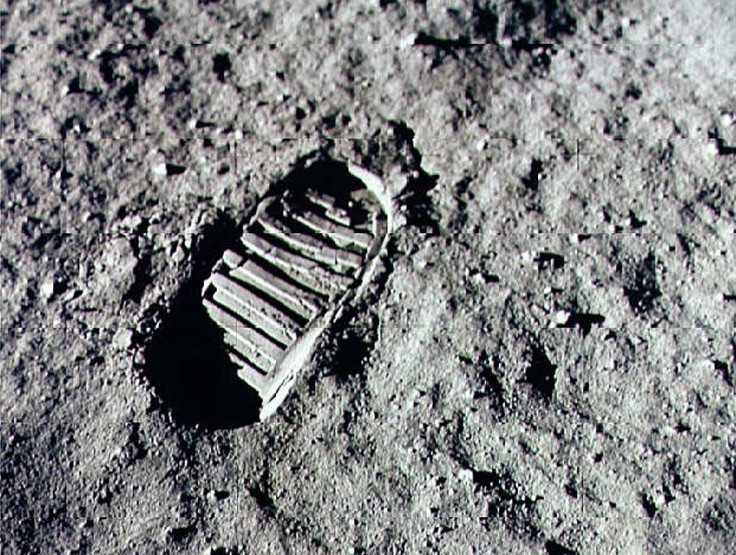Water On The Moon? NASA Scientists Reveal How It's Possible

The Earth's Moon has the potential to host water as it is already rich in the ingredients to create this basic requirement for life, according to NASA scientists.
The Sun apparently plays a huge role in giving the Moon the necessary requirements to create water. Solar wind, which is a stream of charged particles emanating from the Sun, hits the Moon at a speed of 450 kilometers per second (almost 1 million miles per hour), enriching its surface in ingredients for water production, according to new research published in the journal JGR Planets.
Scientists simulated what actually happens when solar wind careens onto the lunar surface. The protons that the Sun streams to the Earth's satellite interact with the electrons on the lunar surface, producing hydrogen (H) atoms. The hydrogen atoms then spread and attach to abundant oxygen (O) atoms that are bound in the silica (SiO2) and other oxygen-bearing molecules that can be found on the Moon's soil. When hydrogen and oxygen combine, they produce to the molecule hydroxyl (OH), which is a component of water (H2O).
As one of the scientists who developed the simulation, William M. Farrell, a plasma physicist at NASA’s Goddard Space Flight Center in Greenbelt, Maryland, explained in a statement why creating water on the Moon is not beyond the realm of possibility.
“We think of water as this special, magical compound,” Farrell said. “But here’s what’s amazing: every rock has the potential to make water, especially after being irradiated by the solar wind.”
Goddard physicist Orenthal James Tucker, who led the simulation research, explained that determining how much water and chemical components can be found on the Moon plays a significant role in NASA's goal of eventual human colonization of the Earth's natural satellite.
“We’re trying to learn about the dynamics of transport of valuable resources like hydrogen around the lunar surface and throughout its exosphere, or very thin atmosphere, so we can know where to go to harvest those resources,” Tucker said.
Several spacecraft have found evidence of water or its chemical components, such as hydrogen and hydroxyl, on the Moon. NASA’s Deep Impact spacecraft, NASA’s Cassini probe and India’s Chandrayaan-1 have used infrared instruments that measure light emitted from the satellite to determine the chemistry of the lunar surface.
It has remained a mystery, however, how the atoms and compounds form on the Moon, but Tucker's simulation backs up the idea that solar wind is the driving force behind the chemical reactions on the Moon.
Overall, the new research showed that the repeated pelting of solar wind on the lunar surface causes bonds among atoms of silicon, iron and oxygen that make up the Moon's soil to break. In turn, this leaves oxygen free to bond with the hydrogen atoms flowing through the lunar surface. After floating from one oxygen atom to the next, the hydrogen atoms eventually diffuses into the Moon's atmosphere and, later, into space.
As Farrell pointed out, this discovery is significant because there are many potential sources for the ingredients of water in space.
© Copyright IBTimes 2024. All rights reserved.





















